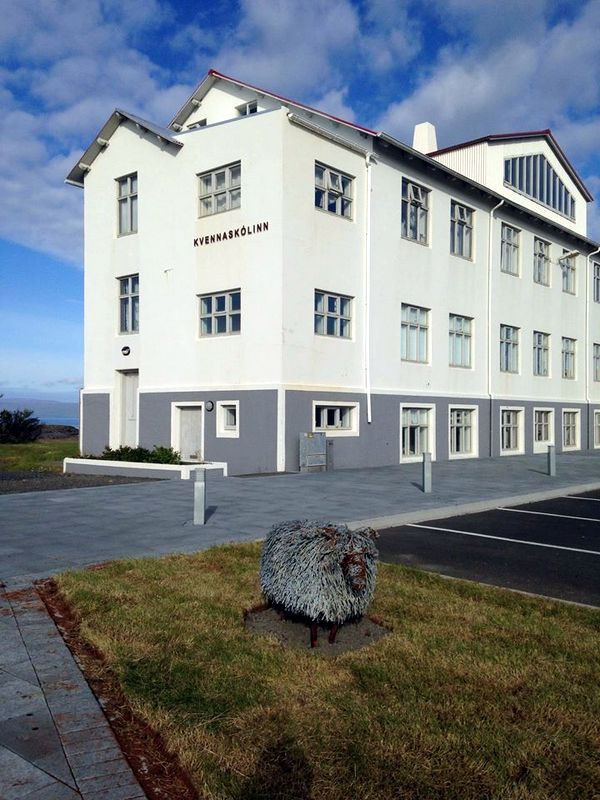
This database is the first of its kind in Iceland and one of the outcomes of the Textile Center's 2017 - 2020 research project, "Bridging Textiles to the Digital Future."
No products found for vendor
The weaving patterns in this database (at this point in time) date back to 1961 - 1972. They are included in a handwritten notebook owned by the society Friends of Kvennaskólinn, featuring over 100 patterns and project notes.
It is just one small part of the large collection of unique Icelandic weaving patterns and teaching materials from the 19th and 20th century held within Kvennaskólinn, the former Women’s School in Blönduós. They are the archives of four Icelandic weavers, including former teacher Solveig Arnórsdóttir, and were given to the Icelandic Textile Center and the society "Friends of Kvennaskólinn" for preservation. The scope of the data is vast and invaluable; thousands of patterns, handwoven samples, and handwritten notes that are rich in cultural value and potentially of great use to the weaving industry, designers, and the educational sector.
"Bridging Textiles to the Digital Future"
In 2016, the Icelandic textile artist and weaving expert Ragnheiður Björk Þórsdóttir spend five months researching the weaving patterns in Kvennaskólinn. This initial research and preservation project sparked "Bridging Textiles to the Digital Future", a three-year project project aiming to analyze, photograph, and digitize weaving patterns, and make them available to scholars, artists and designers online. By applying new research of traditional patterns and how they are woven, new digital weaving pattern technology can be applied to make old patterns compatible with the TC2 digital loom located in Kvennaskólinn.
In 2017, the project was approved for funding by the Icelandic Technology Development Fund (Rannís). Since then, project manager Ragnheiður Björk Þórsdóttir and her research assistants have analysed, photographed, and digitised thousands of weaving patterns, and experimented with materials and colours doing sample weavings on the Textile Center's Tc2 digital loom. Old patterns like Guðrún Jónasdóttir's 1932 block pattern of a coverlet were transformed and reinterpreted for future use.
The project "Bridging Textiles to the Digital Future" was presented in June 2020 during DesignMarch in Reykjavík. The exhibition and database were opened by the Icelandic minister of Science, Education and Culture, Lilja Dögg Alfreðsdóttir.
